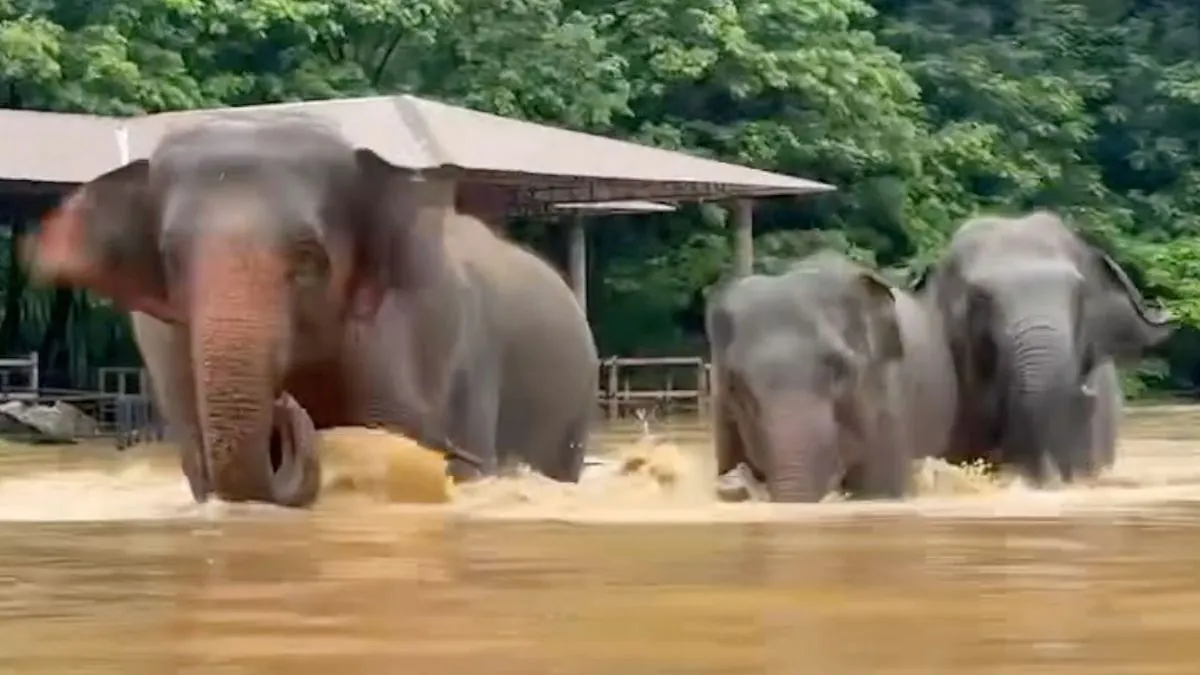In a race against time, Thai authorities and conservationists are working tirelessly to rescue animals from flash flooding in Chiang Mai province, northern Thailand. The rescue operation, which began in August 2024, has intensified as floodwaters continue to rise, threatening the lives of elephants, pigs, and water buffaloes.
Phumtham Wechayachai, Deputy Prime Minister, reported that 117 elephants have been successfully rescued, with efforts ongoing to save nine more. "An operation is underway," he stated, highlighting the urgency of the situation.
The Asian elephant, Thailand's national animal, has faced significant challenges in recent decades. Their population has plummeted from 100,000 in 1900 to a mere 3,000-4,000 today, making these rescue efforts crucial for their conservation. Historically used for logging and transportation, elephants in Thailand have seen a shift in their role since the government banned their use in logging in 1989.
Conservationist Saengduan Chailert, founder of the Elephant Nature Park in Chiang Mai, shared a video on social media showing a herd of elephants running through floodwaters, their trumpeting echoing the urgency of the situation. She noted that one elephant, blind in both eyes, was struggling to keep up with the herd.
The rescue efforts face mounting challenges as previously safe areas succumb to the rising waters. A village that initially served as a refuge for pigs and water buffaloes is now completely submerged, forcing rescuers to seek alternative solutions.
Thailand's northern region has been grappling with severe flooding since August 2024, resulting in 49 fatalities and displacing thousands of households. This disaster highlights the increasing frequency of extreme weather events in Southeast Asia, a trend attributed to climate change and deforestation.
Chiang Mai, founded in 1296 as the capital of the Lan Na Kingdom, is the largest city in northern Thailand. The Ping River, the main waterway in the province, has overflowed its banks, contributing to the widespread flooding. Despite the Thai government's investments in flood prevention infrastructure in recent years, the intensity of this year's monsoon season has overwhelmed existing safeguards.
The plight of the animals reflects a broader ecological crisis. Water buffaloes, which have been integral to Thai agriculture for over 5,000 years, and pigs, part of a significant farming industry in Thailand, are also at risk. The country's rich biodiversity, including over 1,500 species of amphibians and reptiles, faces unprecedented threats from these extreme weather events.
As rescue operations continue, the incident underscores the need for comprehensive disaster preparedness and wildlife conservation strategies. The Thai Elephant Conservation Center, established in 1993, and other sanctuaries play a crucial role in protecting these endangered animals. However, the current crisis demonstrates that more robust measures are necessary to safeguard Thailand's wildlife in the face of increasing environmental challenges.
"We don't know how many elephants will survive, we are going back to help them."
The flooding in Chiang Mai serves as a stark reminder of the delicate balance between human development and nature conservation. As Thailand continues to grapple with the immediate crisis, the long-term implications for wildlife protection and flood management remain at the forefront of national concern.
